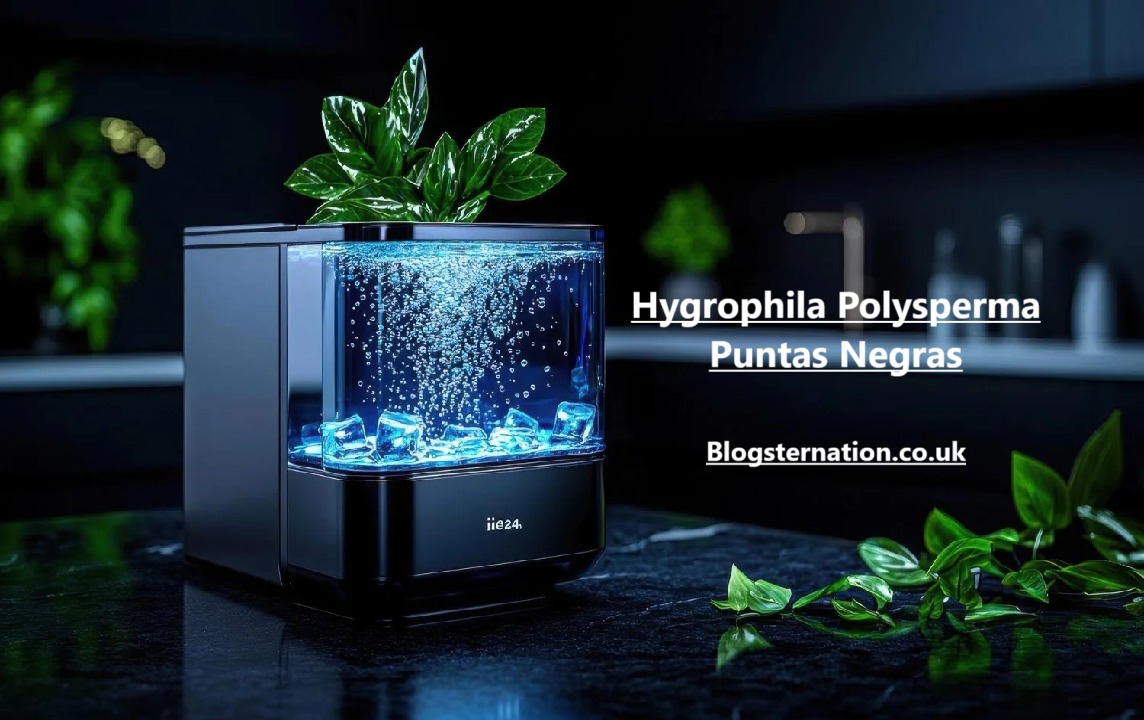Hygrophila Polysperma Puntas Negras

Hygrophila polysperma, often mentioned to as dwarf hygrophila, is a favourite aquatic plant among aquarists. Its spirit, compliance, and plush green vegetation make it a go-to choice for both beginners and seasoned hobbyists. However, a common challenge faced by enthusiasts is the occurrence of “puntas negras” or black tips on its leaves. These darkened spots can dull the plant’s appearance and indicate original issues in the aquarium environment.
This article explores the causes, prevention, and medicines for black tips on Hygrophila polysperma, equipping aquarists with actionable insights to maintain a thriving aquatic garden.
Understanding Hygrophila Polysperma and Its Care Needs
Natural Habitat and Adaptability
Hygrophila polysperma creates from Southeast Asia, where it thrives in slow-moving rivers and bogs. Known for its ability to adjust to a variety of conditions, this plant can display in low-tech setups with negligible lighting as well as high-tech aquariums with CO2 injection. Its strong nature and rapid growth make it an ideal choice for aquarists seeking a lively and low-maintenance plant.
Basic Care Requirements
Notwithstanding its spirit, Hygrophila polysperma has specific needs to stay healthy. It requires moderate lighting, stable water limits, and a balanced supply of nutrients. Neglecting these essentials can lead to growth issues, including the development of black tips. A well-maintained tank with proper lighting and conception ensures the plant remains vibrant and lush.
Causes of Puntas Negras (Black Tips)
Nutritional Deficiencies
One of the leading causes of black tips is a deficiency in essential nutrients, particularly iron and potassium. These nutrients are vital for photosynthesis and overall plant health. When lacking, the plant struggles to produce energy, leading to mark and blackened tips. Regular water testing can help identify and address these differences.
Suboptimal Lighting Conditions
Hygrophila polysperma trusts heavily on adequate lighting to support its fast growth. Insufficient or inconsistent lighting can weaken the plant, causing the leaves to develop black tips. Ensuring the tank has a consistent light source with appropriate intensity and spectrum is crucial for its well-being.
Water Quality and Circulation Issues
Poor water circulation and filtration can intensify the problem. Still areas in the tank may hinder nutrient distribution and inspire the buildup of organic waste. These conditions not only stress the plant but also create an environment helpful to algae growth, which can further damage the leaves.
Preventing Black Tips in Hygrophila Polysperma
Balanced Nutrient Supply
Regularly treating the tank with liquid fertilizers ensures that Hygrophila polysperma receives essential nutrients like iron, potassium, and suggestion elements. Root tabs can also be beneficial, especially if the plant is rooted in a nutrient-deficient substrate. A consistent fertilization schedule helps prevent deficiencies that lead to black tips.
Optimizing Lighting
Invest in high-quality aquarium lights designed for aquatic plants. Position the lights to provide even coverage across the tank, ensuring that no area is left in shadow. Aim for 8–10 hours of moderate light daily, striking a balance to avoid overexposure or inadequate lighting.
Regular Maintenance Practices
Weekly water changes are essential for removing organic waste and maintaining water quality. Trim thick or unhealthy leaves to encourage wilder growth and prevent waste growth. These practices not only promote plant health but also enhance the overall aesthetics of the aquarium.
Remedies for Black Tips on Hygrophila Polysperma
Correcting Nutrient Deficiencies
Start by testing the water with an aquarium test kit to identify nutrient imbalances. Address deficiencies by adding suitable fertilizers, focusing on those rich in iron and potassium. It’s important to dose gradually to avoid shocking the plant.
Upgrading Lighting System
If the existing lighting setup is inadequate, consider upgrading to LED lights specifically designed for planted tanks. These lights provide the right strength and spectrum for optimal growth. Make changes gradually to avoid highlighting the plant with sudden adjustments.
Improving Tank Environment
Enhance water circulation by repositioning filters or adding powerheads. This ensures even nutrient supply and prevents dead zones. Additionally, slim any blackened or decaying leaves to redirect the plant’s energy toward new growth.
Common Misconceptions About Black Tips
Myth: Poor Water Quality Is Always the Cause
While water quality is a significant factor, black tips can also result from insufficient lighting or nutrient deficiencies. A comprehensive approach is necessary to address the issue effectively.
Myth: Only Experts Can Prevent Black Tips
With proper care and attention, even beginners can prevent black tips. Regular checking and maintenance are key to success.
Myth: Fertilizers Fix Everything Instantly
Although fertilizers address nutrient deficiencies, their effects take time to obvious. Combining fertilization with lighting and maintenance adjustments ensures lasting improvement.
Benefits of Maintaining Healthy Hygrophila Polysperma
Aesthetic Value
A healthy Hygrophila polysperma enhances the visual appeal of any aquarium, providing lively green vegetation that creates a spectacular underwater landscape.
Improved Aquarium Ecosystem
Thriving plants contribute to a balanced ecosystem by oxygenating the water, reducing algae growth, and offering shelter for fish and invertebrates.
Personal Fulfillment for Aquarists
Maintaining a successful aquatic garden brings a sense of achievement and joy, making the aquarium a centerpiece of natural beauty.
Conclusion
Hygrophila polysperma, with its toughness and beauty, remains a favorite among aquarists. While black tips can be a trying challenge, they are manageable with proper care. By understanding the causes, applying preventive measures, and applying effective therapies, aquarists can ensure their Hygrophila polysperma stays healthy and lively. A thriving aquarium begins with a commitment to care, creating a melodious and visually stunning underwater world.
FAQs About Hygrophila Polysperma Puntas Negras
1. What is Hygrophila Polysperma Puntas Negras?
Hygrophila Polysperma Puntas Negras is a popular aquatic plant known for its compliance and fast growth in aquariums. The term “puntas negras” refers to black tips that sometimes develop on its leaves, often representing issues with the tank environment.
2. Why do black tips appear on Hygrophila Polysperma?
Black tips can occur due to various factors such as nutrient deficiencies (particularly iron and potassium), inadequate lighting, poor water circulation, or excessive organic waste buildup in the tank.
3. How can I prevent black tips on Hygrophila Polysperma?
To prevent black tips, ensure the plant receives balanced nutrients through regular fertilization, provide sufficient lighting, maintain consistent water parameters, and practice routine tank maintenance, including water changes and cutting.
4. Can black tips on Hygrophila Polysperma be treated?
Yes, black tips can be treated by addressing nutrient imbalances, enhancing lighting conditions, improving water circulation, and decoration damaged leaves to promote healthy regrowth.
5. Is Hygrophila Polysperma a suitable plant for beginners?
Yes, Hygrophila Polysperma is an excellent choice for beginners due to its toughness, compliance to different tank setups, and low maintenance requirements. With proper care, it can thrive in a variety of aquarium conditions.
For More Updates Please Visit Us: Blogsternation.co.uk




